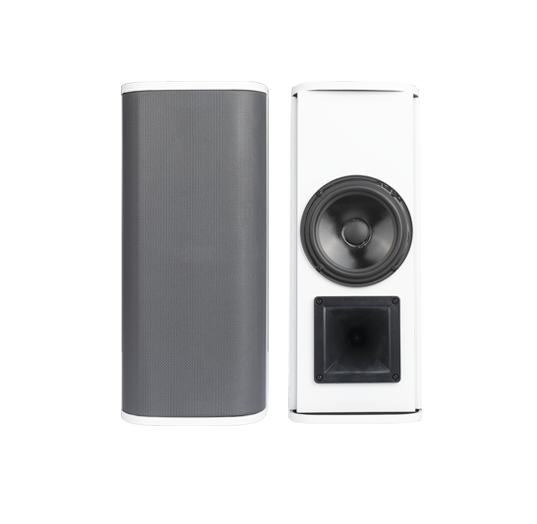Column speakers and traditional speaker configurations represent two distinct approaches to audio reproduction, each with its unique set of characteristics and applications. The comparison between these speaker types involves evaluating their design, dispersion pattern, application versatility, audio performance, and considerations related to cost and complexity.
Column speakers, often referred to as line array speakers, are characterized by their vertical design featuring multiple small drivers arranged in a line. This design is intended to create a focused and controlled dispersion pattern, projecting sound primarily in a vertical direction. The slim and elongated form factor of column speakers contributes to their unobtrusive appearance, making them visually suitable for installations where aesthetic considerations play a significant role.
Traditional speakers, on the other hand, come in diverse shapes and sizes, including bookshelf, floor-standing, and in-wall configurations. Their design is more varied, allowing for flexibility in placement and application. Traditional speakers can have a single driver (monaural) or multiple drivers for different frequency ranges (biamplified or triamplified configurations).
The dispersion pattern is a notable point of differentiation between column speakers and traditional speakers. Column speakers are known for their focused vertical dispersion, creating a beam-like pattern that can be advantageous for directing sound precisely to a specific area. In contrast, traditional speakers generally have a more omnidirectional or spherically shaped dispersion pattern, providing a more encompassing spread of audio throughout a space.

Application and usage scenarios further distinguish these speaker types. Column speakers find their niche in environments with challenging acoustics, such as tall spaces or areas with high ceilings. They are commonly employed in places where focused sound projection is crucial, including auditoriums, lecture halls, and houses of worship. The versatility of column speakers extends to both indoor and outdoor applications, making them suitable for addressing a variety of acoustic challenges.
Traditional speakers, with their diverse designs, are widely used in different settings, from home audio systems to commercial spaces and live performances. Their varied configurations make them adaptable to various environments, allowing for seamless integration into different architectural and interior design contexts.
Audio performance is a critical aspect of any speaker comparison. Column speakers are designed to provide a controlled and focused sound projection, known for delivering clear and articulate audio even in challenging acoustic environments. The vertical alignment of drivers in column speakers contributes to better directivity control and reduced interactions with room surfaces.
Traditional speakers, with their wide range of designs and quality components, offer diverse audio performance. High-quality traditional speakers can deliver excellent sound reproduction with a broad frequency range, catering to a variety of preferences and applications.
Cost and complexity considerations play a role in the speaker selection process. Column speakers, especially those designed for specialized applications or featuring advanced technologies, may be priced higher due to the complexity of their design and precision manufacturing. Traditional speakers, available across a broad price spectrum, offer flexibility to consumers with different budget constraints.
In conclusion, the choice between column speakers and traditional speaker configurations depends on specific requirements, aesthetic considerations, and budget constraints. Column speakers excel in scenarios where focused sound projection is crucial, especially in architecturally challenging spaces. Traditional speakers, with their versatility and diverse designs, remain a popular choice in various audio setups, appealing to a broad range of consumers and professional users.


